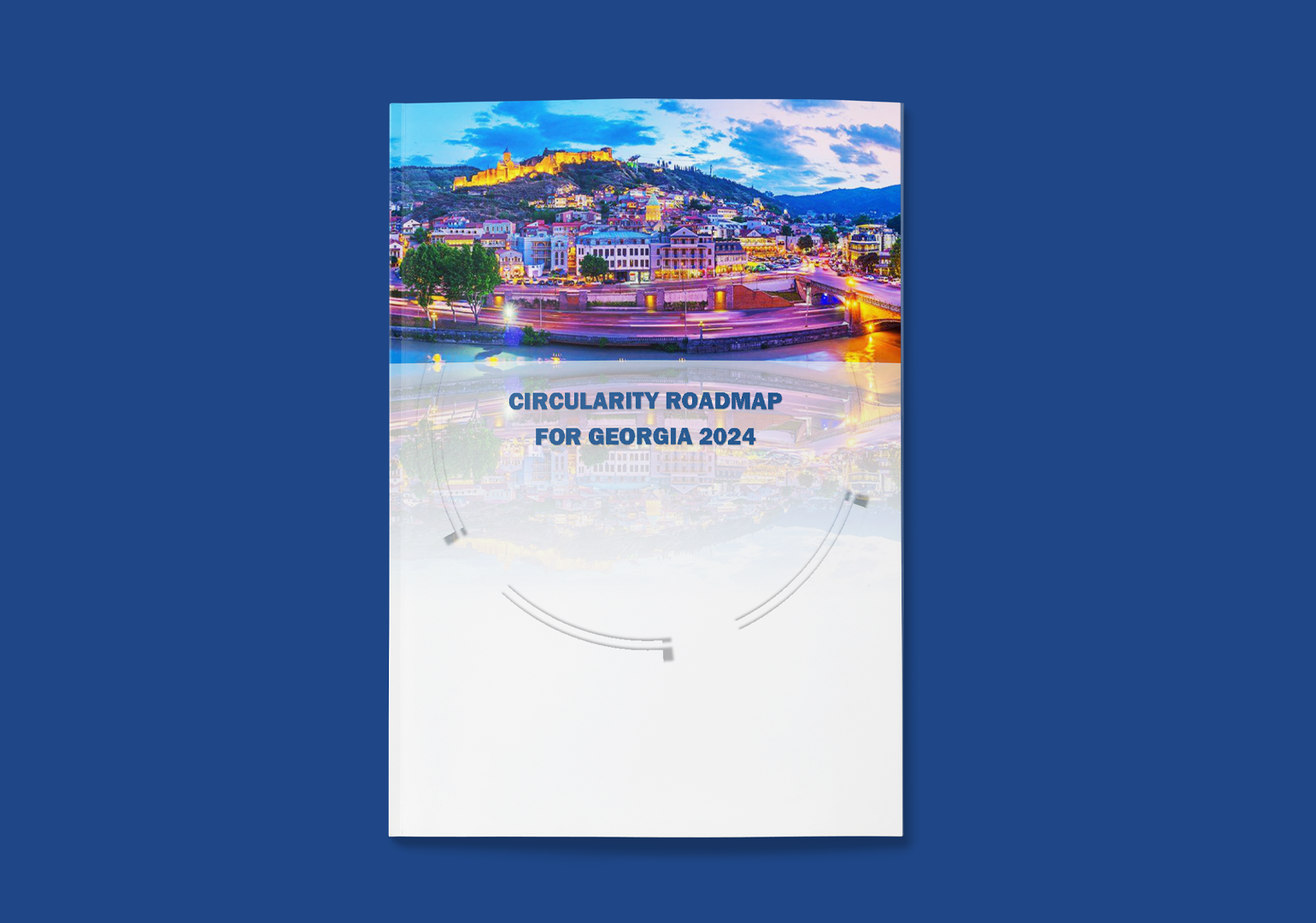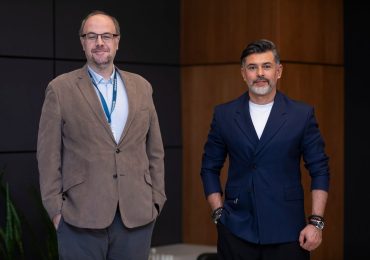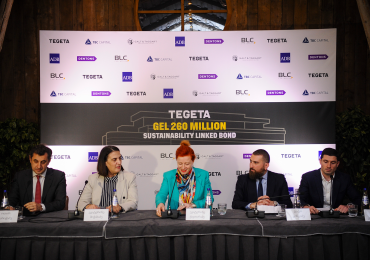Dr Dariusz Prasek – Team Leader, International Consultant in Circular Economy, ESG and Sustainable Development, member of the Executive Board of GSNE “Orchis”, Supporting the Government of Georgia in Enhancing Governance and Policies for a Transition to a Circular Economy Sub-Project. Doctor in Environmental Engineering, Independent International Expert in Circular Economy, Sustainable Financing, Environmental, Social and Governance Areas. Former Director of Operations in Environmental and Sustainability Department of the European Bank for Reconstruction and Development.
Dr Medgar Tchelidze – Deputy Team Leader, Key National Expert in Sustainable Development, member of the Executive Board of GSNE “Orchis”, Supporting the Government of Georgia in Enhancing Governance and Policies for a Transition to a Circular Economy Sub-Project. Doctor in Biological Sciences, Expert in Environmental, Social, Governance and Sustainability Areas.
Abstract:
By 2050, Georgia envisions a society where circular economy principles are embedded in daily life, fostering sustainable production and consumption patterns. The circular economy will drive the regeneration of nature, enhancing resilience, biodiversity, and well-being. Innovation will be at the core, with circular business models, low-impact design standards, and clean technologies becoming the norm. Georgia’s vision for a circular economy is ambitious yet achievable, positioning the country as a global leader in sustainable development. To guide the transition, Georgia has set ten long-term goals, including generating green jobs, reducing waste, increasing recycling rates, and improving energy and resource management. These goals are structured around four pillars: circular innovation, circular culture, circular regulation, and circular regions.

Introduction
Georgia stands as a clear regional leader in its quest to establish a circular economy. This transformative journey began in 2018 with the introduction of the Extended Producer Responsibility (EPR) principle into its national Waste Management Code. The nation’s ambition is to shift from a linear ‘end-of-life’ waste management concept to a regenerative system that closes material loops, ensuring sustainable growth and development. This article delves into Georgia’s ongoing efforts, challenges, and strategic plans to become a circular economy powerhouse by 2050.
The Legislative Framework and Collaborative Approach
Georgia’s progress towards a circular economy is backed by comprehensive policy and legislative updates that govern resource management, renewable energy, and energy efficiency. The Government of Georgia (GoG), in collaboration with civil society organizations, academia, and international partners, is spearheading the development of a National Circular Economy Strategy and Roadmap. This ambitious initiative involves a holistic approach covering production, consumption, waste management, innovation, and investment across various sectors of the economy.
The GoG recognizes that successful implementation requires inclusive partnerships involving a diverse group of stakeholders. A key principle is that these players—whether providing knowledge, funding, or regulatory input—must work together to bring about the required paradigm shift. By 2050, Georgia envisions embedding circular economy practices across all sectors, promoting sustainable production and consumption patterns, fostering creativity and innovation, and driving local sustainable development.
Mapping Georgia’s Circularity
With support from the Swedish Government, the GoG initiated a comprehensive mapping of the Georgian economy in terms of circularity. Conducted by the Georgian Society of Nature Explorers Orchis (GSNE Orchis), the mapping assessed 99 sectors of economic activities and identified 14 key sectors with high potential for circularity. This analysis revealed that Georgia is currently only 1.3% circular, indicating a significant gap of 98.7% in material circularity. Annually, more than 315 million tonnes of resources enter the Georgian economy, equating to nearly 78 tonnes per person. These figures highlight Georgia’s reliance on virgin materials and the need for more effective circular strategies.
The circularity gap does not imply that 98.7% of materials are wasted; a considerable amount is added to the stock in the form of buildings, infrastructure, and biomass. However, it is crucial to design new materials and products with the end-of-life stage in mind to ensure high-value recycling in the future. Georgia’s goal is to increase its circularity metric from the current 1.3% to 9.1% over the next 5-10 years.
Key Findings and Sector-Specific Recommendations
The in-depth mapping exercise highlighted several key sectors for circular economy interventions:
Dominance of Agriculture: Agriculture is a cornerstone of Georgia’s economy, contributing significantly to GDP and employing a large segment of the workforce. Approximately 60% of production comes from the food industry, making it a critical area for improving resource efficiency and reducing waste.
Low Manufacturing Base: Georgia’s industrial production is limited, with only 11% of output in mineral fertilizers and 17% in base metals. The lack of diverse manufacturing sectors means that traditional circular economy strategies like extending product life cycles are less directly applicable. However, participation in international CE platforms and trade schemes can help improve circularity.
High Dependence on Imports: Most machinery, equipment, electronics, and household goods are imported, which creates a gap in implementing circular models that focus on local production and lifecycle extension.
Significant Role of Trade and Tourism: Wholesale and retail trade contribute around 15.6% to GDP, while tourism, despite not being classified as a separate sector, has a substantial indirect impact. These sectors can be leveraged to promote circular business models, such as sustainable tourism and green retail practices.
Construction as a Key Sector: Construction has shown consistent growth, accounting for 7.9% of GDP in 2023. Enhancing circularity in this sector through resource-efficient building practices and sustainable materials can yield significant benefits.
Infrastructure Challenges: High losses in gas distribution and electricity transmission, along with outdated irrigation systems, indicate a need for infrastructure rehabilitation. Addressing these inefficiencies can minimize resource wastage and reduce greenhouse gas emissions.
Prioritization and Clustering of industries: National Statistics Office of Georgia contains 99 items in the list of various types of economic activity. Preliminary screening allowed to narrow the range of economic activities under consideration to 14 promising sectors. Further clustering evaluation made it possible to split this sectors of industry into groups of the same type according to the criteria of circularity (economic and environmental indicators, resource consumption, material and waste flows), indicators characterizing key players and the process of sector administration, economical sustainability and type of regulations needed in support. The identified clusters are:
- Cluster 1. Management of Resources and Losses
- Cluster 2. Mining and Basic Metal Manufacture
- Cluster 3. Basic Industrial and Municipal Waste Streams Management
- Cluster 4. Energy Efficiency and Renewable Energy
The Roadmap for Circular Transformation
The Circularity Roadmap, developed by GSNE Orchis under the auspices of the UNDP with financial support from Sweden, outlines a detailed strategy for transforming Georgia’s economy. The process was guided by an Inter-Ministerial Coordination Board comprising 36 representatives from various ministries and government agencies, under the leadership of the Deputy Minister at the Ministry of Environmental Protection and Agriculture, Acad. Solomon Pavliashvili.
The Roadmap emphasizes a participatory and capacity-building approach, engaging stakeholders through plenary and consultation meetings at critical stages of development. Collaboration between key ministries, particularly the Ministry of Environmental Protection and Agriculture (MoEPA) and the Ministry of Economy and Sustainable Development (MoESD), was essential to align visions and ensure effective implementation.
Circularity Strategy Pillars and Key Actions
The Circularity Roadmap is built on four strategic pillars: Circular Innovation, Circular Culture, Circular Regulation, and Circular Regions. Each pillar addresses specific challenges and lays down a comprehensive set of short, medium, and long-term actions:
Circular Innovation:
Focuses on establishing a robust national innovation system by embedding circular design principles into products, services, and processes. This involves creating business incubators, pilot projects, and consultancy services to support circular entrepreneurship and innovation.
Circular Culture:
Aims to make circular practices the norm through education, communication campaigns, and transparency measures. Awareness-raising programs and capacity-building initiatives are key to instilling circular habits in society.
Circular Regulation:
Seeks to adjust the regulatory framework to support circular practices. This includes expanding EPR schemes, setting recycling targets, incentivizing waste separation at source, and promoting eco-labeling and product standards.
Circular Regions:
Tailors circular economy strategies to the diverse geographic and cultural contexts of Georgia’s regions. It promotes sustainable local development through improved waste management infrastructure, regenerative rural production, and secondary material markets.
The Circular Economy Strategy: Goals and Vision
The Circularity Roadmap sets out 10 strategic goals to guide Georgia’s transition:
(1) Generate new green jobs; (2) Decrease municipal solid waste per capita; (3) Decrease total waste generation; (3) Increase material productivity; (4) Increase general recycling rate; (5) Increase municipal solid waste recycling rate; (6) Recover land affected by illegal dump sites; (7) Minimize energy and material losses in transport networks; (8) Increase energy efficiency; (9) Improve land and water resource management; and (10) Improve the land and water resource management and material productivity
Georgia’s vision for 2050 is to position itself as a global leader in circular innovation and sustainable development. The Circular Economy Strategy envisions a regenerative economic system that places people and nature at the centre. By promoting green jobs, responsible resource management, and sustainable production and consumption, Georgia aims to establish a thriving circular economy that benefits both society and the environment. The pathway to achieving these goals involves a range of actions, from removing subsidies for linear economic activities to creating new markets for circular products through Green Public Procurement. Public-private partnerships will play a pivotal role in driving innovation and scaling up circular solutions across the country.
The next steps in transitioning Georgia to Circular Economy
Georgia’s commitment to transitioning towards a circular economy is evident in its strategic approach and comprehensive policy framework. While the journey is long and challenging, the nation is well on its way to embedding circular principles into its economic model. With strong government support, international partnerships, and active stakeholder engagement, Georgia is poised to become a regional leader in the circular economy, driving sustainable and inclusive growth for decades to come.
Transitioning to a circular economy is necessitating a comprehensive understanding of the current economic structure and sectoral priorities. The CE model emphasizes not only waste reduction and recycling but also efficient resource management, minimizing energy consumption, and optimizing the use of natural resources such as land, water, and minerals. This approach aims to maintain or enhance GDP contributions while reducing environmental impact, making it crucial to identify low-cost, high-impact interventions for different economic sectors.












